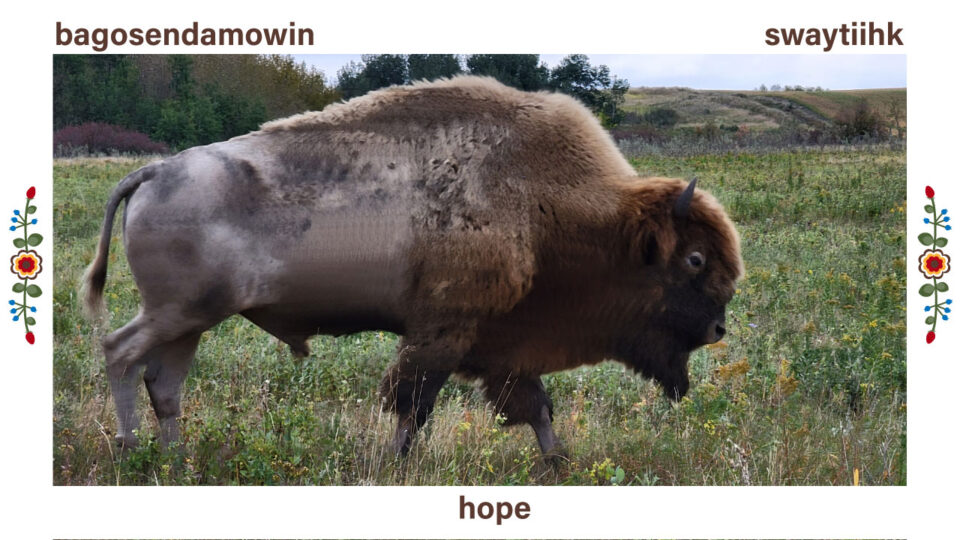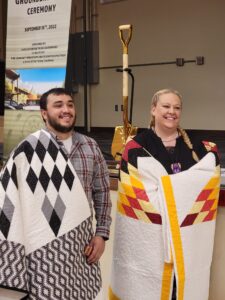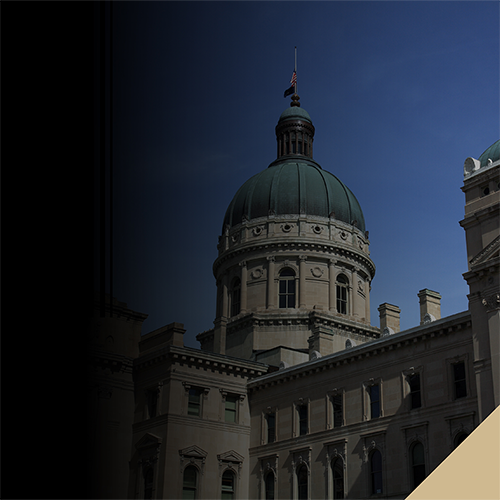Finding Hope. How I Discovered Compassion and Perseverance, Tucked Away in Rolling Hills

~by Michael Wilcox
Assistant Director and Program Leader for Community Development / Purdue Extension
Associate Director / North Central Regional Center for Rural Development (NCRCRD)
On September 16, 2022, I witnessed something I wasn’t sure would ever occur.
Let me step back…
In 2018, Bo Beaulieu and Alison Davis decided to write a grant to USDA-Rural Development for the new Rural Economic Development Innovation Initiative (REDI). Their proposal was unique in that it brought together land-grant institutions in the southern and north-central regions to work on economic development issues in new and innovative ways. Success would require the application of all of the networking to collaboration continuum steps.
Over one thousand miles away in the Turtle Mountains of North Dakota, Stuart LaFountain and Erin Belgarde were writing an application on behalf of the Turtle Mountain Band of Chippewa Reservation to be considered as a REDI region. They were asked to rank the REDI consultants by preference. The Purdue-Kentucky alliance ranked dead last.
The rest is history…
REDI applications were many, and the available slots were few. So being selected was going to be a big deal. As the slotting process was winding down, we came to the Turtle Mountain application. After lengthy deliberation, a final decision was made: Turtle Mountain would be a REDI region, and the Purdue-Kentucky alliance would be assigned to the project – a youth detention center.
As we prepared ourselves to work with nine regions in the south and north-central regions, several months went by before we had our first call with Turtle Mountain. To say that both sides were a bit curious about how this would play out is an understatement. However, over time, we began to catch our stride and the youth detention center idea evolved into a focus on addressing the root cause of significant challenges that the people of Turtle Mountain are facing..
During the course of the project, Nicole Adams and I worked together with Erin and Wylee Azure, along with an ever-growing group of stakeholders, to learn more about the situation on the reservation, solidify support for a residential recovery center focused on community and culturally-based recovery from substance use disorder while fostering the development of a recovery-oriented system of care. Our guiding light was the concept of the “The Healing Forest,” pioneered by Don Coyhis. In it, he writes:
“‘Suppose you have a hundred-acre forest and in that forest there is disease or sickness. All the trees are sick. It is a sick forest. Suppose, then, you go to the forest one day and you take one of those sick trees and temporarily uproot it and put it under your arm.
You walk down a road and you put it in a nursery where there is good soil. Or, you take a young person. You take them out of the community and you put them in treatment.
So now you have this tree in good soil, and it gets healthy because it is getting sun and rain. It is getting well. It is turning green. You get this tree to be well and you take this well tree back to the sick forest. What happens if we take a well tree back to a sick forest? It gets sick again.
It means that we must actively heal the community and its institutions at the same time an individual works on his or her own healing from alcohol or drugs or other unwell behaviours. The individual affects the community and the community affects the individual. They are inseparable from the point of view of addiction recovery. Everything must be in the healing process simultaneously.”
A supply and demand study for treatment services was conducted. The demand for treatment was ever-growing (partly due to the fallout from the COVID pandemic). The supply of treatment was constrained by regulations, infrastructure, and available personnel. A clinical plan was laid out. A robust business plan with phased implementation was developed. Funding was sought. After two years of hard work, the vision was in focus, the plan was in place, and the value proposition was clear. All that was needed was the funding.
The New Markets Tax Credit program became our solution. Exceedingly complex, but a solution that would bring together Native and non-Native partners. A solution that positioned USDA-Rural Development to continue the support that had started with Promise Zone designation evolved into REDI designation and eventually turned into unwavering, non-programmatic support. A solution that leveraged the hard work of everyone associated with the project up to that point. A solution that required an immense amount of collaboration and the creation of a new Indigenous non-profit. The legal, financial and clinical expertise mobilized to reach this point was massive. The political capital? The concept had survived one Tribal Council election, and we were now facing another election later in 2022. The stakes were high.
With all of the pieces in place, the moment of truth came in March 2022. A vote by Tribal Council. The decision was not easy. Millions of dollars were at play. The Recovery Center was going to be governed by a non-profit Board. The business plan was penciled out, but the entire concept was going to require, in some sense, a giant leap of faith.
The project was voted down.
The entire team was devastated. Yet, in the midst of our despair, we resolved not to give up. Why?
Hope.
Our team maintained hope that the Tribal Council would reconsider. Based on what was said in the Council chambers during the deliberation, it was obvious that Council shared our hope that something would be done to address the scourge of substance use disorder. The people of Turtle Mountain expressed their hope throughout the project development.
From an academic perspective, Snyder defines hope as “a cognitive set that is composed of a reciprocally derived sense of successful (1) agency (goal-directed determination) and (2) pathways (planning of ways to meet goals).” The Oxford Handbook of Hope (yes, hope is a science, and the handbook is a thing!) explains further, “…the fundamental premise is that hope is the combination of both agency and pathways thinking, and that hope not only helps individuals to identify goals, but that hope is a strong source of resilience and determinant of positive outcomes in most circumstances and that individuals of all backgrounds can and do benefit from hope.”
The details of ‘pathways thinking’ will be discussed in another article. Our application here is that the entire concept of the center, its campus, and the recovery-oriented system of care were derived from a map of pathways to recovery developed by Purdue and informed through collaboration with our partners in the Turtle Mountains. This map is evidence-based and owned by the Tribe. This ownership sets the course for buy-in and active engagement. It also contributes to agency, where all collaborators – especially those in Turtle Mountain – have a feeling of control over the planned actions and the intended consequences.
It must be noted that there is a difference between hope and optimism. As Bryant and Cvengros explain, “hope focuses more directly on the personal attainment of specific goals, whereas optimism focuses more broadly on the expected quality of future outcomes in general.” In a sense, it is similar to the difference between empathy and compassion. Empathy, like optimism, is a feeling, whereas hope, like compassion, invokes action. Arthur Brooks breaks this down into three hope-filled steps:
- Imagine a better future, and detail what makes it so.
- Envision yourself taking action.
- Act.
The Recovery Center Board took this to heart after the Tribal Council vote. As a result, we reconvened and made significant revisions to the Recovery Center’s footprint. This new plan would bring building costs down while maintaining the integrity (and effectiveness!) of the Recovery Center. We discussed every detail of the plan and pitch. We checked in with the community and Council members. The Board prepared to act.
At the next Tribal Council meeting, the new plan was unveiled. Again, the Council, in its wisdom, examined every detail and asked thoughtful questions. After actively listening, they went into an executive session. We waited.
After what seemed like an eternity, we received the news we had dreamed of for two and a half years. The Recovery Center was moving forward!
…On September 16, 2022, I witnessed something I wasn’t sure would ever occur.
We broke ground at the Turtle Mountain Recovery Center. The moment was joyful and somber. Stuart LaFountain reminded us that the community had already broken ground too many times – for those that the community had lost to substance use disorder. Tribal Council Chairman Jamie Azure reminded us that while the road to realizing the Recovery Center was long and winding, the community and the Council never lost hope that the Recovery Center would become a reality. And the entire community let Erin Belgarde and Wylee Azure know how much they were appreciated for their hard work, tenacity, and compassion for their community.
As for Nicole Adams and myself, we humbly accepted the gift of beautifully handmade quilts in recognition of our collaboration with the Turtle Mountain community.
In the end, the greatest gift thus far has been embodied in the white buffalo/bison. In fact, Don Coyhis selected the white bison as the name of his recovery-focused non-profit organization for a reason. The white buffalo is sacred. The white buffalo is a sign of good things to come, and Turtle Mountain is home to a white bull and three white calves. They roam on land just north of the Recovery Center site, watching the construction of what will be the direct result of their gift to the Tribe:
Hope.





